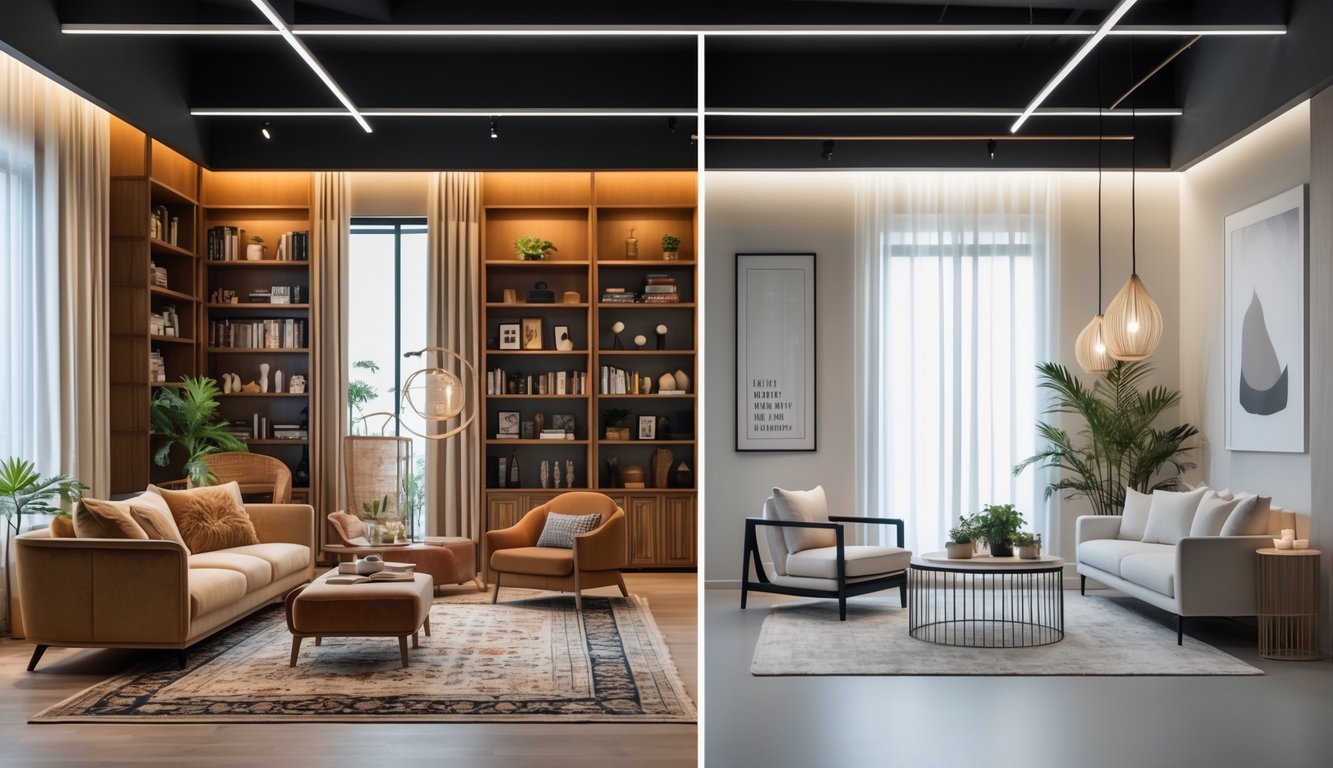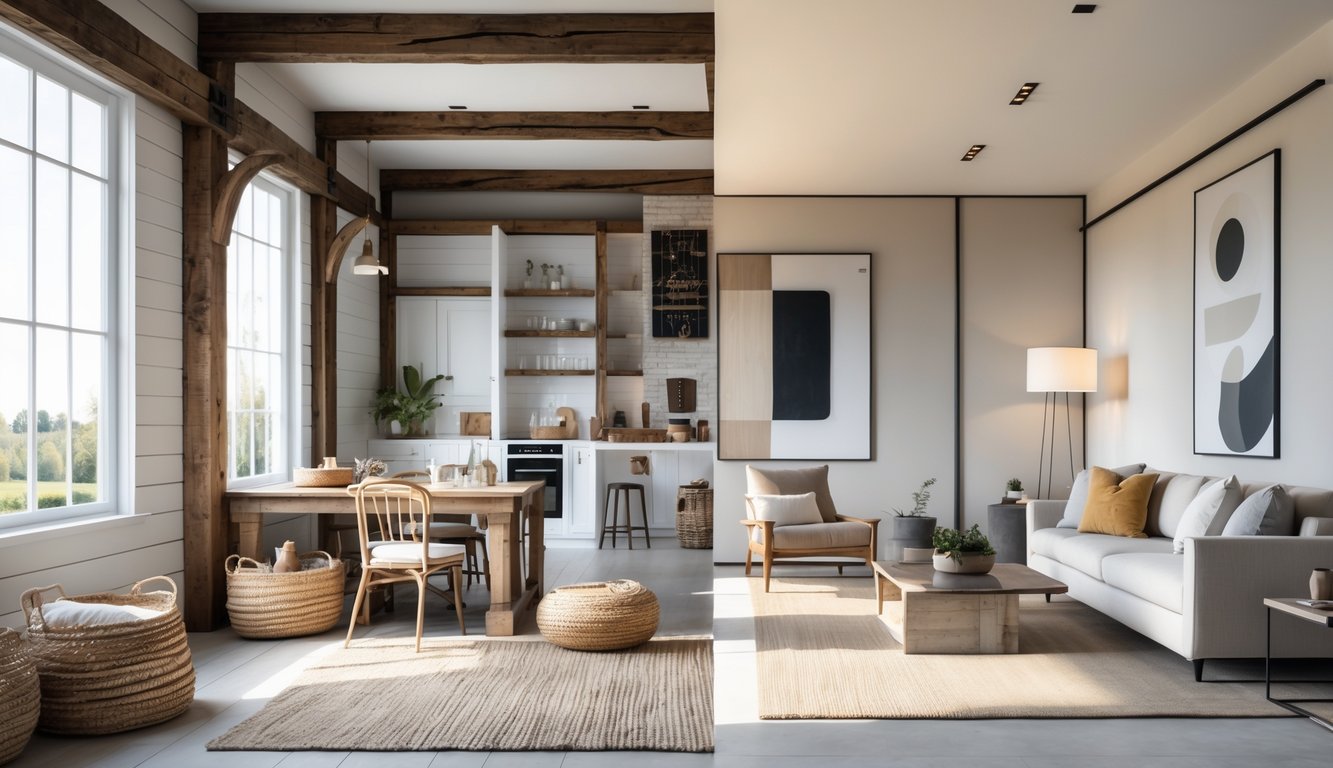
Open Shelving: From Functional to Focal Point
Nobody warns you how fast open shelving takes over your kitchen. One day you’re hiding mismatched Tupperware, next day your pasta jars and chipped mugs are the main event. It’s a tightrope between “functional” and “look at my stuff!”—and honestly, it’s easy to end up with either a mess or a fake-looking display nobody touches.
Styling Open Shelving for Maximum Impact
People talk about “the rule of thirds,” but I just toss things up there and see what sticks. Cookbooks, black canisters (from Target, not some fancy antique shop), and a snake plant I keep forgetting to water. I like odd numbers and switching up heights, but honestly, I just move stuff around until it feels less boring. Lighting? Not a gimmick. Even a cheap IKEA puck light makes my glassware look way fancier than it is.
Celebrity designer Millen Gordon says, “Your shelves should tell a story, not look like a store display.” Sounds cheesy, but it actually helps me skip the matching sets. Art prints next to bowls, mugs next to tiny plants—if it looks too planned, I get bored. If you need more ideas, James and Catrin’s open shelves guide shows real homes that are way less intimidating than anything on Pinterest.
Common Mistakes to Avoid
Here’s what drives me nuts: people cram everything onto those shelves just because they’re “open.” Baskets labeled “snacks,” ugly chargers, plastic cereal bins—suddenly it’s chaos, not curation.
Also, dust. Nobody says it, but open shelving means you’ll be wiping down every cup and plate twice as often. I bought new glass tumblers last year, and now they’re just dust magnets.
People forget to mix storage—if you only use open shelves, clutter creeps in fast. Want to keep it sane? Mix open and closed storage. I do, and my kitchen doesn’t look like a tornado hit it. Decor experts agree, and after living with it, I’m convinced it’s the only way.
The Decline of Modern Farmhouse Style

Every time I scroll Zillow or walk into an “open house,” it’s like déjà vu: barn doors, washed-out paint, fake “distressed” beams, and that endless sea of “gather” signs. Did Pinterest do this to us? Or is it just Target’s fault? Something definitely shifted.
Origins and Evolution of Modern Farmhouse
Before Joanna Gaines started pushing galvanized planters, farmhouse style was just… practical. Rural, not curated. Then the 2010s hit, and suddenly every Brooklyn apartment had shiplap (with zero cows in sight). HGTV probably turbocharged it, and now it’s everywhere. Nobody warned us it’d get this repetitive.
Clara Feldman, who apparently studies this stuff, says what started as “local, functional” turned “aspirational” once big stores cashed in. Now every pillow, faucet, and table screams “farmhouse” even if it’s made of plastic. The New York Times called it “today’s McMansion,” which feels about right. Original charm? Drowned by Instagram posts with fake eggs in baskets.
Why the Look Feels Overdone
Shiplap. Everywhere. Every online listing has those “weathered” neutrals, open shelves with mason jars, barn doors for bathrooms—can’t escape it. I asked a designer and she just rolled her eyes: “People are tired of that sterile white look; it’s old.”
Industry folks say the original appeal—warmth, mismatched finishes—got bulldozed by algorithm-driven sameness. I’m not alone: buyers in 2025 want color, personality, and detail, not endless white and fake wood. House Digest even quoted a designer saying, “People are moving away from monochrome, trying green, bolder colors.” If I see one more barn door, I’m putting in a pocket door out of spite.
Emerging Alternatives
I thought maximalism was a joke, but here we are—clients keep asking for moody colors, wild rugs, not “distressed” paint. Urban loft stuff is sneaking in: industrial metal, sculptural lights, nothing that screams “feed store.” I’ve seen a weird jump in requests for “postmodern vintage” and even ‘90s glass block (why?!).
Even in the country, people are asking for “quiet luxury”—real stone, custom hardware, clean lines, not word art. The Spruce says designers are mixing a little farmhouse with black accents, more color, and layers that feel less fake. I tried it—no barn door, added brass hardware, emerald cabinets. Nobody missed the mason jars.